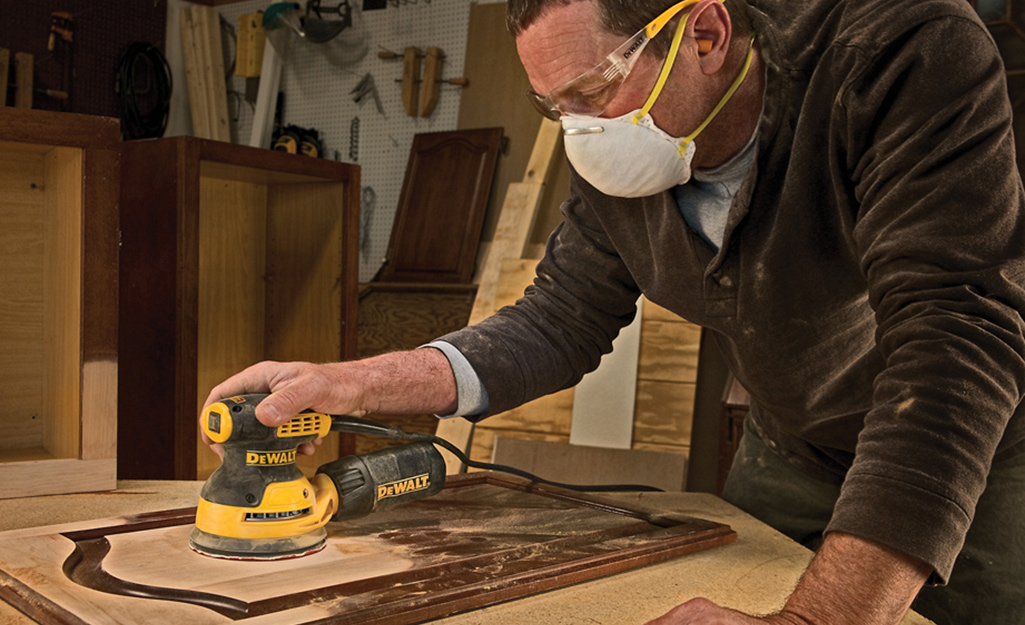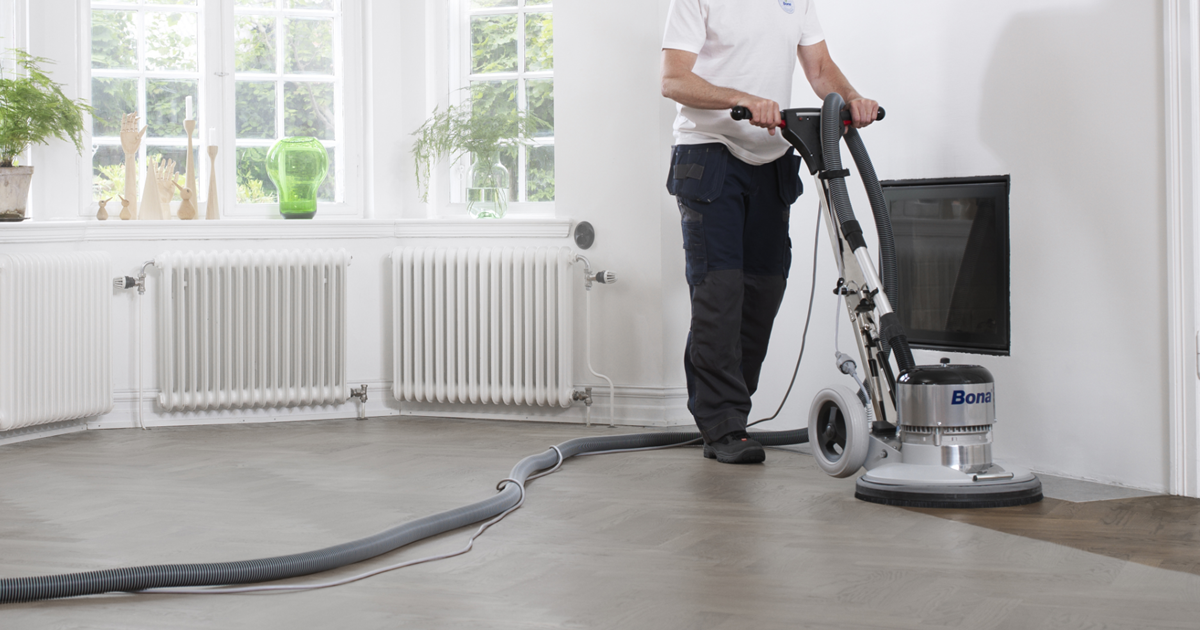Are you confused about the different types of sanders available in the market? Do you want to choose one that meets all your needs? This article will help you understand the differences between orbital, random orbital and belt sanders, so you can make a smarter purchase decision. Ready to learn more? Let’s get started!
One of the greatest mistakes when sanding is to use the wrong tool for a job. Sanding is used often in woodworking, so it’s important to understand the difference between orbital, random orbital, and belt sanders and which one you should use. An orbital sander uses a circular motion that covers a small area while random orbital sanders spin both circularly and in random motions resulting in heavier stock removal and less swirl marks. Lastly, belt sanders offer greater speed and power but can leave scratches on surfaces if used incorrectly. It is no wonder why these tools are essential when it comes to any hand-sanding application.
In this guide, we will compare the three types of sanders: orbital, random orbital, and belt; discuss their benefits; examine different models; provide usage tips on each; walk through user reviews; teach you proper maintenance procedures; answer common questions about sanders; and share creative projects with detailed instructions on how each type of sander can be used best. We hope that after pushing through everything here that you have learned enough information about each type of sander to make an informed decision before your next project!
Factors to Consider
When considering factors to contemplate before buying a sander, the most important aspect to consider is the type of sander. Sanders can be separated into three major categories: belt sanders, orbital sanders and random orbital sanders. Here is some information about these sanders and their benefits to help you make an informed purchase decision.
Belt Sanders: This type of sander uses a looped belt that moves around two or three drums which spin rapidly. Its advantage is high speed and efficiency in large flat surfaces. However, it can only be used for operations where the surface plane is not disturbed and works best on wood and metal finishes that are already close to plane.
Orbital Sanders: This type of sander uses an abrasive pad that spins around in circles due to its orbital action, thus giving it its name. It has lower speed than other types, which reduces scratch marks left behind when using hard sanding sheets and big blocks of abrasive material. Orbital sanders are suited for all-around material operations such as leveling a planar surface and removing dried sealant from door frames without damaging wood or metal finishes nearby.
Random Orbital Sanders: This type of sander combines the action of an orbital with a random pattern meaning it moves corners in loops with changing diameters making them less prone to leaving swirls in finishings when used with aggressive materials or on woods with grooves or certain patterns along surfaces such as herringbone or multiple linear lines such as laminate floor planks, plywood crevices etc .
Discussion of the essential factors to consider when selecting a sander, including:
The choice of sander will mostly depend on the particular job. For heavier removal jobs, belt sanders are the ideal choice as they have powerful motors and use coarser grit sheets to remove stock quickly. For touch-up work or sanding between coats, a random orbital sander is best as it produces very little dust, but is still expensive enough to give you a smooth and even finish without gouging or marring the work surface. Finally, for more intricate projects requiring more detail, such as contour sanding in tight corners and curves, an orbital sander should be used with even finer grits.
When choosing a sander it is important to consider the following factors: power rating, orbital size/ orbit pattern (the diameter of the round path cut by the pad), velocity (RPMs/ oscillations per minute), sheet compatibility (standard sheet size and shape), body design (balanced, ergonomic handle) and dust collection ability. The selection process may simply come down to what’s within your budget, but if you can afford it always opt for one that has better construction quality because this will translate into better results in most cases.
Project size and scope
When considering the size and scope of a project, it is important to choose the right tool for the job. Orbital sanders are designed for use on small areas such as furniture finishing or minor woodworking. They provide plenty of power and speed to quickly get a job done, but they are not suitable for large jobs due to their limited capabilities.
Random orbital sanders are excellent for both small and large workpieces as they can cover more surface area with a wider range of sanding motions. Best suited for mid-sized projects, these versatile tools have adjustable speeds to allow for smooth results on any type of material.
Finally, belt sanders are intended for larger projects like deck refinishing or flooring removal where larger surfaces in need of heavy duty sanding require the greater power output these units provide.
Safety Considerations
Whenever you are using power tools, it is important to take special precautionary measures to ensure your safety. The same applies to orbital, random orbital, and belt sanders.
When it comes to safety precautions for these tools, there are three key considerations: selecting the right tool for your project; inspecting the machine before you start; and wearing safety gear while operating.
In regards to selecting the right tool for your project, make sure you keep in mind the size, power level and type of sanders that are appropriate for the job that you need done. Different sanders have different purposes and choosing one that doesn’t meet your needs can lead to poor results. Always read up on what kind of materials a particular sander is best used for before purchasing it or starting a new project.
Inspecting the machine is another essential step in effectively using any sander safely. Before beginning work with an orbital, random orbital or belt sander make sure all parts of the machine are attached securely and are operating correctly. If anything looks out of place or appears damaged, do not use it until a replacement part has been installed properly by a professional technician.
Finally, when operating a sander always wear proper safety equipment such as dust masks/respirators, eye protection/goggles/visors and hearing protectors such as ear plugs or ear muffs. If dust accumulates on any of your tools during use be sure to take breaks often enough to fully clear off any particles which may have gathered on them as they represent potential hazards while working with them going forward.
Explanation of the safety precautions to take when working with sanders, including:
Sanders can be essential tools for a variety of woodworking, furniture-making, and refinishing projects, but they must be used safely. Whether you are working with an orbital sander, random orbital sander, or belt sander, make sure you are aware of the key safety precautions to take when using sanders to ensure your project is completed safely.
When working with any type of sander, there are a few core safety precautions to consider. Make sure you wear the appropriate protective gear such as eye protection and dust masks to prevent any accidents or unnecessary exposure to hazardous materials. Additionally, keep your workspace clean and organized to prevent frustration and minimize the chances of an accident occurring. Also double-check your equipment before beginning your project in order to ensure that all pieces are securely attached and functioning properly so that you can avoid unexpected shifts while in use.
In addition to these standard practices that should always be followed when using a power tool like a sander, certain types of sanders also require extra care when handling them:
* Orbital Sanders: Orbital sanders have small rotating sanding disks at their base so when using this type of sander take extra caution when applying pressure during use as it’s easy for them to dig into the material being worked on if too much pressure is applied. Additionally, it’s important to keep the sanding disk clean during use by wiping away any build-up on its surface for consistent performance; otherwise too much pressure may need to be applied leading up potential issues such as marking of the material.
* Random Orbital Sanders: Random orbital sanders generate movement through a combination of circular spiral motions around its center makes it even easier for operators if they don’t monitor pressure levels as this type has bit more give making them easier on material surfaces than regular orbitals. With random orbital sanders its important take special care where edges meet flat areas so that over-sanding doesn’t occur resulting in an uneven surface finish – never position too close or far away from these edges while in use so getting in hour angles will give you better control allowing those tricky spots closer inspection and accurate adjustments later on in terms of achieving desired finish results.
*Belt Sanders: Belt sanders provide support outside their base which prevents scratches from appearing due many tiny wheel marks created upon contact with surfaces when operating orbitals or random orbitals without support feature – which means first at all start off slow because holding them down tightly will cause springs beneath rubber pad compress making it difficult obtain desired results – then apply appropriate desired pressure once reach medium speeds and stay consistent avoid abrupt changes – don’t forget adjust drive wheel according instructions given , ensure added weight doesn’t get applied far back from machine’s fulcrum point either , especially case ensuring job gets completed properly efficiently.
Eye and ear protection
Eye and ear protection are two of the most important pieces of safety gear you can use when using orbital, random orbital or belt sanders. The motion of the sanding process is likely to create debris that can be dangerous if inhaled or come into contact with eyes. In order to ensure your safety, it is important to always wear safety glasses and ear plugs when operating one of these tools.
The importance of protecting your eyes cannot be overstated. Continuous exposure to dust particles, wood shavings, and other forms of debris can cause long-term damage to your eyes that may not show up until years down the line – even if you’re wearing protective eyewear at all times. Wearing some form of eye protection is especially important for finer sanding operations because these particles can be small enough to enter through a larger frame like glasses and cause harm.
Likewise, ear protection should always be worn when using any type of sander. With orbital sanders in particular generating a high level noise frequencies as they move faster than most other power tools, hearing loss or irreversible damage can occur due to continued exposure without proper protection.
Respirato ry protection
ry protection
When using any power sander, it is important that you use proper respiratory protection to protect yourself from the dust and debris caused by sanding. Without proper respiratory protection you could be inadvertently exposed to hazardous particles and pollutants. When selecting a respirator mask, be sure to pick one rated for handling fine dust particles and other pollutants associated with woodworking or other activities where sanding may take place.
When buying a respirator, check to make sure it is marked with an N95 or higher rating for filtering out harmful particles. Additionally, be sure that the mask also carries a mark indicating that it meets the stringent standards of the National Institute for Occupational Safety and Health (NIOSH). Be sure that whatever mask you purchase fits comfortably on your face, as an ill-fitting mask will not provide adequate protection against dangerous particles or pollutants. If possible, try on different masks to find one that feels comfortable before purchasing it so you know you have one that fits properly.
Finally, always make sure to keep your respirator clean and in good repair; replace any pieces (such as cartridges) as needed according to manufacturer instructions and regularly clean/disinfect your respirator prior to storage. With proper precautions in place, using a power sander can be safely done without causing respiratory harm.
Maintenance
Keeping your sander clean and properly maintained is essential to ensure optimal performance and longevity. Basic maintenance involves simply cleaning the sander after use, ensuring that any dust particles or debris accumulated after each project are removed from the sanding surface and tool body. This includes wiping off any accumulated dust from the orbital sander/polisher/buffer’s housing in between uses. Additionally, you should routinely check for wear and tear of components such as pads, belts and bearings to prevent any potential damage.
For random orbit sanders, it is also important to ensure that the dust collection bag is kept emptied of dirt and remaining abrasive particles during operation to maintain peak performance of your tool. Failure to do so can reduce the effectiveness of dust extraction which can lead to clogs or accidental damage of parts. Additionally, it’s recommended that any tools used on a regular basis should be oiled before each use as this will keep them functioning at their best for longer periods of time without breaking down due to regular wear and tear.
And if you still have questions about how best to maintain your sander, it’s recommended that you refer to the user’s manual for detailed instructions on maintenance procedures!
Explanation of how to maintain a sander to ensure its optimal performance and longevity, including:
In order to ensure the optimal performance and longevity of your sander, regardless of the type, there are several steps you will want to complete regularly. First, be sure to keep your sander clean by removing all sawdust near its components and motors. This will help prolong its life as well as reduce the potential for fire hazards. Additionally, make use of a damp cloth occasionally to wipe away any surface dust buildup that can also obstruct the internal components from working at peak efficiency.
When you’re ready for more detailed maintenance requirements for each type of sander, read on for specific instructions about Orbital Sander Maintenance, Random Orbital Sander Maintenance, and Belt Sander Maintenance.
Orbital Sander Maintenance: An orbital sander is one in which sandpaper disks rotate around in a circular motion on its body or head. Because orbital sanders have fewer moving parts than almost any other type of sander on the market today, they do not require very much maintenance apart from keeping them clean. However should you find that over time your machine is running slower than usual or if it has excessive vibrations during its operation – then it may need lubrication or other parts replaced such as a worn out armature or bearings depending on your make and model unit.
Random Orbital Sander Maintenance: A random orbital sander provides incredible power when it comes to aggressive sanding applications compared with an orbital sander because it moves rapidly in many directions instead of just one like an orbital does. To maintain this type of machine it’s best to periodically check the head motor’s movement angle versus how much the motor itself has worn away due to friction build-up over time; this could cause unwanted vertical vibration upon operation which should be addressed right away by refinishing part surfaces if need be or replacing any internal component if necessary – all depending again on your specific make and model designation. Additionally consider adding a bit of lubrication at certain points where metal parts come into frequent contact with one another so that force resistance can remain at a minimum while performing operations with your random orbit sander tool kit.
Belt Sander Maintenance: A belt or disc electric powered disk abrasive grinding tool is available in many different configurations ranging from single speed (which runs solely at one speed regardless of the job being tackled) up through variable speeds allowing more detail-oriented jobs where control becomes more pertinent than pure power would typically allow for instance; maintaining them properly can mean having great success with getting that perfect finish every time rather than suffering from each job taking too long due to having an inefficiently configured setup beforehand! One way would be siphoning away dirt accumulation from around drive belts – which can bog down power output eventually as these travel around between pulleys – thus finding yourself reworked pieces instead because drive belts did not function as desired once wear became too great! Aside from adding lubrication here and there throughout a belt sander’s bearing joints – checking screws/tightening them down (especially if rattles become loud during use) is another necessary step before even plugging machines into their appropriate wall outlets otherwise sparks could result leading to fires so stay safe when using power tools like these!
Cleaning the sander
Cleaning your sander is an important step to maintain its performance, extend its life, and ensure a quality finish on the project you are working on. It is especially important for orbital and random orbital sanders because their performance relies on the removal of any dust or debris from the sanding pad with every rotation. This ensures that it is not reused, distributed again over the workpiece and therefore impacting negatively on the finish. On a belt sander, dirt can accumulate in various components of the machine, leading to slower movement or jamming of mechanisms.
Physical cleaning refers to wiping down of parts exposed to abrasion when sanding; this includes housings, hinges and levers. It should be done at least once weekly or after every large job if performing commercial work. Concentrate on internal areas such as switches and motors where dirt tends to congregate in dust-collecting crevices. A stiff brush will get out most particles but for tougher spots use a vacuum cleaner with a hose attachment for a deeper clean in these tight areas.
For abrasive parts such as housing surfaces and sanding pads, try using an all-purpose degreaser cleanse these hypersensitive areas but avoid any corrosive cleaners as they will attack the material used here which can weaken them over time compromising safety features embedded within each sander design.
Replacing worn parts
Replacing worn parts is part of the maintenance and upkeep of sanders. The most commonly replaced parts on an orbital sander include the drive belt, pad, and switch actuator. Make sure to disconnect the power supply before beginning any maintenance task.
The drive belt is a band that wraps around the axle in order to transfer power from motor to axle. When worn, it can slip off, or fray resulting in poor performance of your sander. If this happens, use a screwdriver to remove the top by loosening screws that are securing it in place, and then replace with a new belt as directed by your product’s manual.
Random orbital sander pads need to be changed occasionally due to wear and tear from sanding jobs. Replacing them is straightforward – simply turn off the power source, remove old pads from mounting base and attach new ones with a few kicks or screws provided with replacement kit. It may be necessary for you to buff down surface of old pad for successful attachment of new one – use buffing cloths or machine supplied with sanding tool for this purpose only.
Finally, switch actuators function as electrical contact between switch and motor while powering device on/off; so if they become corroded or worn out due to prolonged use then these should also be replaced regularly (as detailed in product manual). For example: On belt sander, remove four screws securing bottom plate before reaching into inner workings where two wires exit motor housing meeting up at single switch actuator which can be pulled away gently inserting brand-new part securely thereafter following all safety measures recommended by manufacturer’s manual.

Conclusion
In conclusion, orbital, random orbital, and belt sanders are all excellent tools to help you in your woodworking projects. Each type of sander has advantages and is better suited for certain tasks than others. When choosing the right sanders for specific tasks, looking at the features and functions of each type can help narrow down the selection to find the best tool for the job. Orbital sanders are great for smaller jobs that do not require aggressive sanding, while random orbital sanders are perfect for larger smoother surfaces and tight corners. Belt sanders work great on big surfaces finest smother finishes of any tool available.
No matter which type of sander you decide on for your project, it’s always important to remember proper safety precautions when using power tools. Follow manufacturer instructions, use safety goggles and a dust mask when needed and never leave a sander running unattended.
FAQ’S
What is the difference between orbital and belt sander for paint removal?
Belt sanders are more aggressive and better suited for heavy paint removal on large, flat surfaces, while orbital sanders are better for lighter paint removal and producing a smoother finish on curved or irregular surfaces.
What is an orbital belt sander?
An orbital belt sander is a hybrid of a belt sander and an orbital sander, combining the aggressive sanding power of a belt sander with the precision and smooth finish of an orbital sander.
What are the different types of orbital sanders?
The main types of orbital sanders are random orbital sanders, finishing sanders, and detail sanders. Each type is designed for a specific type of sanding task.
What is the difference between a belt sander and a palm sander?
Belt sanders are more aggressive and better suited for heavy material removal, while palm sanders are smaller, lighter, and better for finishing work and sanding in tight spaces.
What is the difference between a random orbital sander and a finishing sander?
Random orbital sanders are more versatile and better suited for a wide range of sanding tasks, while finishing sanders are designed specifically for producing a smooth, polished finish.
Which type of orbital sander is best?
The best type of orbital sander depends on the specific sanding task. Random orbital sanders are the most versatile and can handle a wide range of sanding tasks, while finishing sanders are better for producing a smooth, polished finish.
What is a belt sander used for?
Belt sanders are used for heavy material removal and for sanding large, flat surfaces such as floors, decks, and tabletops.
What is the advantage of belt sander?
The advantage of a belt sander is its speed and power, making it ideal for heavy material removal and sanding large, flat surfaces.
Which sander is best for paint preparation?
A random orbital sander is usually the best choice for paint preparation, as it can remove old paint without damaging the underlying surface and produce a smooth finish for painting.
What are two uses of orbital sander?
Two uses of an orbital sander are smoothing wood surfaces and removing old paint or varnish.
See more:
- Best drum sander 2023
- Best drywall sander 2023
- Best hand sander 2023
- Best handheld belt sander 2023
- Best metal sander 2023


